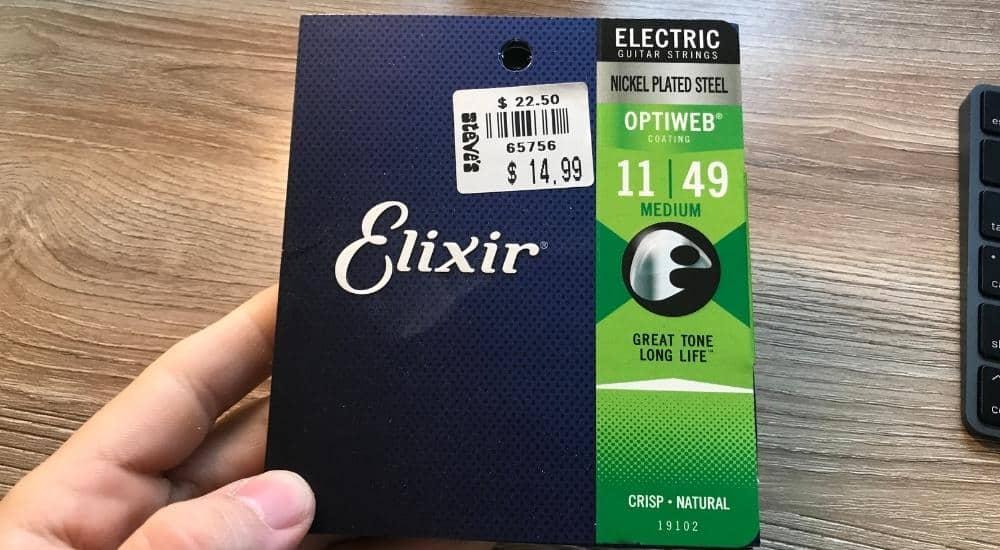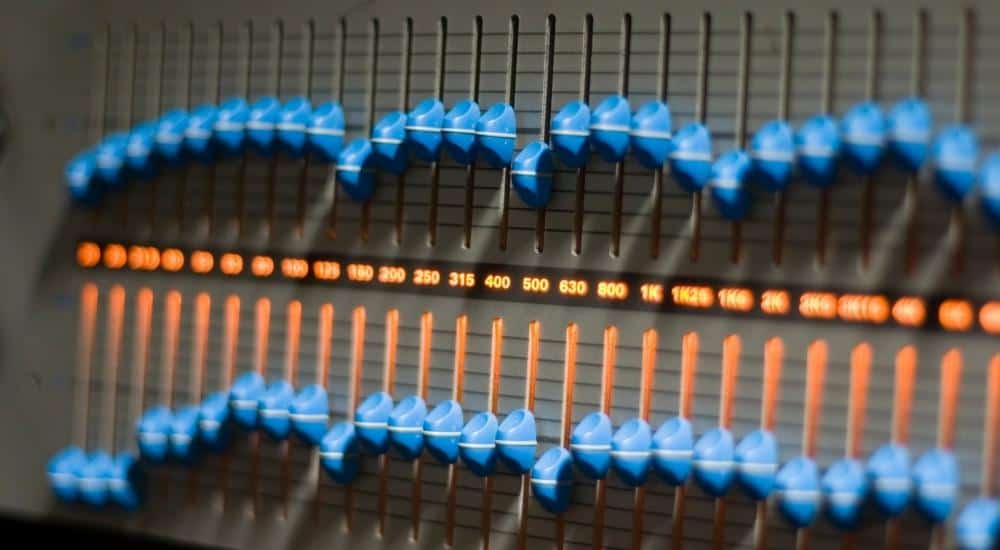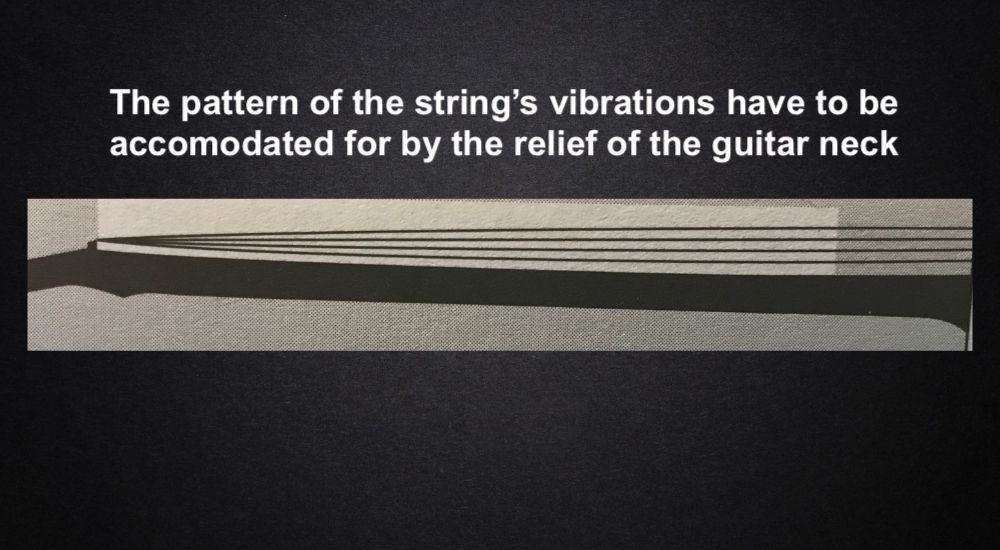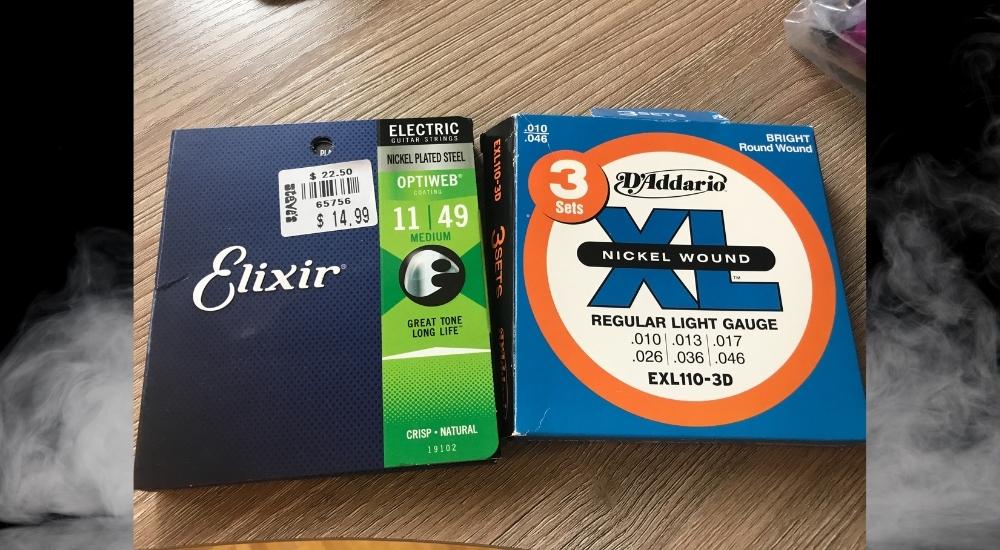Having the right strings on your guitar is crucial for a couple of reasons including for how they sound but most importantly for how they feel under your fingers. Some people say thicker strings are richer and fuller, but this is largely subjective.
Many guitar players have resorted to using thicker strings because they heard through the grapevine that thicker strings came with a better sound, however, it still appears to be the case that light and medium gauge guitar strings are the most popular amongst guitarists.
The main difference between light and medium guitar strings is that medium strings are typically 1/1000ths of an inch thicker (0.0254mm). Medium strings tend to have more bass and fullness as a result but they’re also slightly harder to play.
Finding the right-sized strings is a practice of trial and error rather than a sudden, permanent decision. It takes much experimentation to find your style, rather than just going with the type that is most popular. Knowing the correct string gauge for you is important primarily due to comfort and playability but also for tone. If you find it difficult to actually fret and bend notes, you won’t want to play the guitar. And what good is that?
The Main Differences Between Light & Medium Guitar Strings
1) Medium Gauge Strings Are Thicker

This is the most obvious and the most important distinction between light and medium gauge strings, but the difference isn’t nearly as pronounced as extra light vs. heavy gauge strings for instance. The lighter the gauge, the easier it is on the hands to fret and play chords.
Playability and tone go hand in hand with each type. Some people argue that larger strings are better for larger-bodied guitars, and smaller strings are best suited for smaller-bodied guitars.
The lighter strings have a gentler tension on the neck than the heavier strings. However, both are totally fine to use on a standard guitar.
String gauge is calculated in 1/1000th of an inch and commonly ranges from .008 to .056in – you can measure them with a digital calliper like what I did in my other article.
Depending on if you are talking about acoustic strings or electric, there are also more gauge differences when it comes to acoustic strings.
It’s worth pointing out that people commonly refer to them as whole numbers, for example, you’ll hear a player ask for “9s” which is meant to mean, “0.09 – 0.046” like these ones. The chart below depicts some of the strings I like to use as well as their gauges.
| Electric Guitar String Types | String Gauges |
| Regular Light Gauge D’Addario Strings | .010 .013 .017 .026 .036 .046 |
| Medium Gauge Elixir Strings | .011 .014 .018 .028 .038 .049 |
| D’Addario Light Acoustic Strings | .012 .016 .024 .032 .042 .053 |
| D’Addario Medium Acoustic Strings | .013 .017 .026 .035 .045 .056 |
As you can see from the different gauges, it’s not a huge difference, but you’ll notice right away when you start playing. Jumping from light to medium on the electric guitar will definitely make a difference in how you play the instrument.
There was a time when I only used thicker gauge strings, but over the last year or so, I’ve started to play lighter strings because I find they’re just WAY easier to play.
Originally, I got thicker strings because I heard that they were less prone to fret buzz and they sounded better, but I’m not so sure that’s the case. Rick Beato, for example, talked more about this in his video here.
2) The Tone is Different
According to commonly stated knowledge, the lighter strings will resonate with a brighter, higher-end tone.
The medium strings will have a rounder, heavier, lower-end tone. In other words, the lighter the strings, the more treble-derived the tone will be. The heavier the set of strings, the more bass-driven tone the tone will be.
These differences can be heard when listening to them played side by side, although, as I said earlier, this is largely subjective and everyone has their own idea of how they sound.
If you’re interested in hearing a comparison, I’d take a look at the Rick Beato video that I mentioned earlier. It’s down here as well:
3) The Balance of Low, Middle, and High-End Frequencies are Different

Lighter strings are better for music with a lot of strumming for a couple of reasons. One is that the higher frequencies in strumming and picking tend to cut through the mix better.
With medium gauge strings, you lose a little bit of this high end as the tone is more concentrated in the mid to low range.
Not only that but strumming on a guitar with super thick strings is a lot more difficult, something we can talk about again in a second.
It’s often stated that the middle frequencies on the heavier strings will have a deeper mid-tone, and the light strings will have a brighter vibe.
The mids are important when breaking through the music, just as much as the highs mentioned above. If the mid-range is cut out, you lose punchiness and clarity which you may not want.
The low-end frequencies of a guitar compete with the higher-end bass frequencies, so medium-gauged strings will compete more.
If you are looking for a balanced sound, use them. For a little more range, though, try the light gauged. Reverb, delay, and overdrive signals are arguably tighter with the smaller strings, they have a tighter low end, which punches through. Although it depends on who you ask.

One thing that’s important to mention is that many of these differences are very subtle, to the point where many people, including yourself, may not even notice. So you have to ask yourself how important it is really to obsess over string thickness?
4) Different String Gauges Lend Themselves To Different Genres

As I just mentioned, light gauges are good for fingerstyle and strumming. The increased playability you get from lighter strings allows the player to play faster and easier.
Medium gauged strings are good for Jazz, acoustic, low action guitars, slide playing, and drop tuning. Lighter strings are better for beginners, blues, fingerstyle, and picking.
Playability of the Strings is Different
Although, again, it depends on who you ask. There was a time when I would say that thicker strings were unquestionably better for faster playing but I’m not so sure that’s the case anymore. I find lighter gauge strings to be way easier to play when playing fast.
It’s because you don’t have to fret quite as hard and they’re way easier to bend. It’s commonly argued that you can drop the action on a guitar with thicker strings, but I’m not so sure that’s true either.
Much of the common knowledge in the world of guitar playing hasn’t been tested and is merely “true” because it has been said so many times.
Bends and Vibrato Are Much Easier With Lighter Strings
The smaller strings seem to be easier to play, which can mean that the player will play more confidently. They will be able to pick more easily and dig in more. One great example is tremolo picking and fast alternate picking.
I find that both of these techniques are far easier with lighter gauge strings because the pick is better able to push through the string (the string vibrates and pushes out of the way when you strike it with your pick).
If you try tremolo picking on a guitar with very heavy strings, you’ll see what I mean. It’s a totally different beast and it’s much harder. That said, if you’re a heavier player and have a heavy hand, you may want heavier strings. The feel may be the most significant factor besides tone.
All-in-all, I can’t emphasize the importance of comfort enough which, in my opinion, is really the primary difference between light and medium gauge strings.
A beginner, for instance, probably shouldn’t start with heavier gauge strings because they don’t have the finger strength or the calluses built up yet to handle them.
5) Tension on The Neck is Different

Different string tension also has a different effect on the guitar neck. Because thicker strings are wound tighter, they pull more on the neck which means they tend to produce more relief on the instrument when you’ve wound them up. You’ll have to tighten the truss rod a bit to straighten the neck out.
If you put lighter gauge strings on the instrument, on the other hand, you’ll probably notice the neck is back-bowing a bit, which means you’ll have to loosen the truss rod.
Over the years, people have made truss rod adjustments seem scary for some reason but really there’s nothing to be worried about. My guide will help you with this too.
Are Light or Medium Guitar Strings Better to Play?

Lighter strings tend to be much easier to play than medium guitar strings. For example, you’ll need less effort to use bend and vibrato. On the other hand, if you find yourself playing with a heavy hand, you may decide to get heavier gauge strings instead.
Are Medium Strings Louder Than Light Strings?
It’s commonly argued that the gauge of a guitar string plays a role in how loud they are, however, the primary reason for this is that it takes more energy and effort to pluck a thicker guitar string. Plucking the guitar string harder will produce a much louder sound.
Are Medium Strings Bad for Your Guitar
Medium gauge guitar strings will not hurt your guitar but a guitar will need to be set up in a different way to accommodate for heavier strings. The same thing can be said for lighter strings because the guitar will also need to be set up for less tension on the neck.
Switching string gauges will require a truss rod adjustment and probably an intonation adjustment as well. You can learn how to do these things in my guide here. There will come a point though when you do need to get a new nut for your guitar.
Most guitar nuts, for example, are built for the string gauge that they’re set up with according to factory specifications. These are usually light strings.
If you wanted to switch to 12-52 gauge strings, you would probably have to file down the nut to accommodate for these much thicker strings. You could also just get a new nut.
Important Things to Note
1) It’s Up to Personal Taste
While there are many differences, it comes down to personal taste and what fits you best. The music you play and even the instrument you play will determine what type of strings you use.
If you feel like your instrument’s voice is higher pitched and you need that sustain and vibrato, then you should play with the lighter gauged strings.
2) There Are Other More Important Things That Determine the Tone Besides String Gauge
Things like what percentage of what type of metal is used in making the string make a huge difference in the tone, so also keep that in mind when choosing strings.
In other words, there are other factors than just thickness. There are options like bronze, phosphorous bronze, nickel, steel, etc. These all play a role in how they sound.
3) Hybrid Strings Exist
On my ESP Eclipse II which I have tuned down to D standard, I use Ernie Ball’s Slinky Top Heavy Bottom strings because they have – as the title suggests – a lighter top and heavier bottom.
I find this string gauge is perfect for dropped tunings, especially if you want to drop the low E by a full step to Drop C. Ernie Ball has a ton of different types.


 Written By :
Written By :

